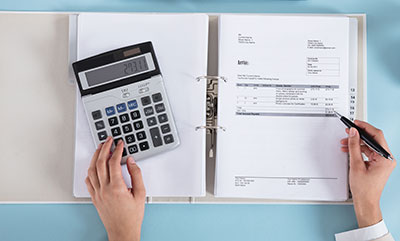FINANCIAL ADVICE | managing your money
How CD Laddering Works
Published February 11, 2019

Key Takeaways
- Certificates of deposit are considered a good place to save your money because they are risk-averse.
- The short-term CDs in your ladder will allow you access to your funds in the short term.
- A CD ladder will help you be prepared should interest rates fluctuate.
You have both short-term and long-term goals. You want to be able to save your money to achieve these goals. You want growth, and you also want to be able to access your money when you need it.
Sometimes it’s hard to find the specific savings product that fits your situation. Some savings products lock your money up for years. Some savings products don’t offer the rate of return you want. You may think that some savings products are just too risky.
Consider the strategy of CD laddering
Certificates of deposit, or CDs, are considered a good place to save your money because they are risk-averse, offer a higher interest rate than other savings account products, and offer variable maturity dates. Some people make the mistake of putting all of their money into one short-term CD account, which earns a lower interest rate compared to longer-term CDs. After one CD matures, it renews for another short-term account.
What is a CD ladder?
CD laddering is a diversification strategy. It allows you to set up multiple CD accounts with your credit union, as opposed to putting all of your money into one short-term CD account that you find yourself continually renewing.
You get a better interest rate for the long-term CDs with a longer maturity date. However, you may not want to tie up all your money for the long term. A CD ladder will allow you to plan for the future and give you access to your money when you need it. Opening a short-term CD with some of your money allows you access to the funds you need in the short term. You will get an even better rate by allocating some of your funds to a longer-term CD.
Plan for your future: CD laddering takes some planning. You need to anticipate when you will need to access your funds for expenses. Goal setting will help you plan for the future. Make sure you set short-term and long-term goals.
Benefits of CD laddering
Liquidity: The short-term CDs in your ladder will allow you access to your funds in the short term. You can get a CD that will mature in six months, for example.
Flexibility: You can allocate specific amounts of your savings to CDs with different maturity dates.
- Many people will put most of their money into a long-term CD, like a 24-month CD, because it offers a higher interest rate.
- You can put some of your money into a mid-term CD, perhaps one that matures in 18 months, to be ready for expenses coming up in the future.
- You can put less of your money into a short-term CD, which will allow you access to your money for expenses that are coming up soon.
Interest rates: When you implement a CD ladder strategy, you are going to get a better interest rate because you aren’t putting all of your money into a short-term low-interest CD account.
CD ladder rates & market conditions approach
One thing you know for sure is that the economy will change. A CD ladder will help you be prepared should interest rates fluctuate. If rates go up, you will have access to money in your short-term CDs that you can re-invest at the better rates. If interest rates fall, you’ve already got money invested in a long-term CD insulating you from the dropping interest rates. It’s a good idea to diversify your investments.
- When interest rates are rising, consider investing a higher percentage of your money in a shorter-term CD.
- If you anticipate lower interest rates, lock into a longer-term CD with a favorable interest rate.
CD ladder pattern strategy
If you are investing in CDs in order to have money available for an unforeseen event — in other words, you don’t have a specific expense in mind — you may want to employ a CD laddering pattern, which will keep some of your money liquid, and at the same time you will benefit from higher interest rates for the future.
Here’s an example of how a CD laddering pattern works
You would open five different CDs with an equal amount in each account; let’s say you choose accounts that mature within a year of one another, starting with a one-year CD. After that one-year CD matures, and you do not need to use that money on an expense, you would re-invest it into a new five-year CD.
You know that the second CD will mature in a year, and you’ll be able to access that money should you need it at that time. Using this example, within five years, all of your accounts in your CD ladder will be long-term accounts earning the highest interest. This approach provides a steady cash flow as the CDs will mature subsequently, and you will be earning a high rate of return because each is now a long-term CD. This approach gives you the flexibility of a short-term CD and the benefits of a high-interest long-term CD. It avoids the mistake of putting all your eggs into one basket that you continually renew at the short term. You can choose to open accounts with shorter maturity terms than this example, such as 6-month maturity intervals, should you need more flexibility.
A refresher on savings and CDs
Saving is the act of preserving capital for later use. Funds will accumulate over considerable time if you’re committed to putting away money regularly. When you add a growth component to your savings, you can offset the effects of inflation. The amount of growth you achieve, or interest, is based on your tolerance for risk. Your approach to saving for the long term will look different from your approach to saving for the short term.
CDs are accounts offered by your credit union and are insured up to $250,000 by the NCUA.





